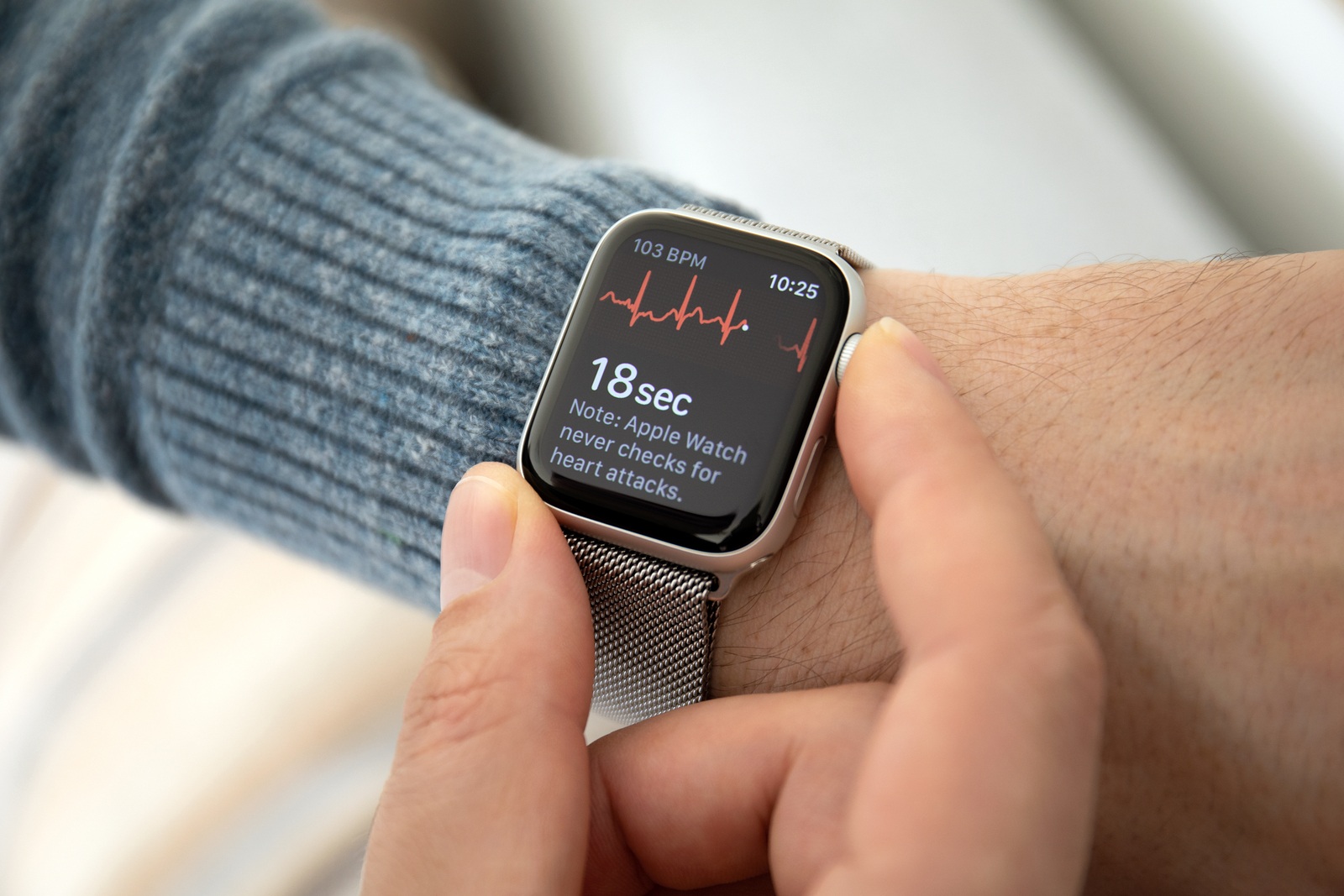When Apple unveiled the fourth generation of the Apple Watch with ECG function, the feature caused a lot of discussion. What was initially laughed at turned out to be increasingly important over time. Ultimately, the computer watch saved many lives. Now there is a new story surrounding the ECG feature.
The Apple Watch Series 4 and Series 5 were released with a 1-lead ECG equipped. The aim is to detect atrial fibrillation (AFib), which can lead to strokes and other health complications. The detection of cardiac arrhythmias is also part of this. But the popular smartwatch can apparently also detect other heart conditions, as has now become known. Important: The Apple Watch is by no means intended to replace a visit to the doctor. After all, the 1-lead ECG is not as sensitive as a 12-lead ECG - but there was an exception, as has now become known.
Apple Watch ECG reveals clues
In the latest case, things seem to be a little different. The European Heart Journal reports the story of an 80-year-old woman whose Apple Watch detected evidence of heart disease that went unnoticed in a hospital ECG. According to the article, the lady presented to the University Hospital of Mainz complaining of chest pains, which were also accompanied by irregular heart rhythm and dizziness. When a 12-lead ECG was then performed, doctors could not find any evidence of ischemia. The woman then presented the Apple Watch ECG results, which included "recordings with pronounced ST segment depression." After analyzing the computer watch results, doctors did indeed find signs of myocardial ischemia, and the woman was referred to the catheterization lab. Essentially, the Apple Watch ECG recordings contained evidence of heart disease that the hospital's specialized equipment could not detect.
Apple Watch Series 6 could set new standards
The results were so convincing that the woman was treated and discharged the next day. The Apple Watch also appears to be able to detect myocardial ischemia. The report:
The development of smart technologies paves the way for new diagnostic capabilities. In the case of the Apple Watch, after installing the mobile application, an ECG is recorded when a finger is placed on the watch's digital crown. A 30-s scan is saved in a PDF file that can be retrieved by the application.
For example, the Apple Watch can be used not only to detect atrial fibrillation or atrioventricular conduction abnormalities, but also to detect myocardial ischemia. An apple a day can keep a myocardial infarction at bay.
If you would like to read the full report, you can find it below. This year, the Apple Watch Series 6 If the rumors are true, we can look forward to more useful and, above all, groundbreaking functions, including measuring the oxygen level in the blood, a function for detecting panic attacks and more. You don't have an Apple Watch yet? Then take a look at our Amazon Storefront There you will find some of the Apple Watch Series 3, 4 and 5 models and more. (Photo by Denys Prykhodov / Bigstockphot)
- Does the Apple Watch Series 6 detect panic attacks?
- Apple Watch: The difference between GPS and GPS+Cellular




